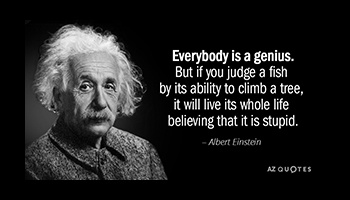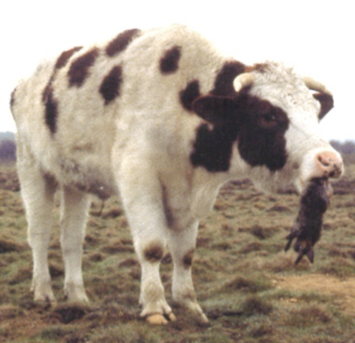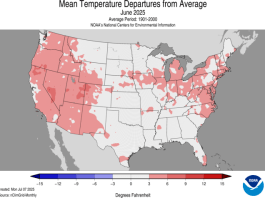
Tom Krawiec, one of our On Pasture authors, wrote me this morning from northern Alberta, Canada to say that he’s already had to wear a touque two mornings in the last ten days. That means that, even though it’s only the second week of September, it’s time for us all to be thinking about fall and winter feeding for our livestock. And if you’ve stockpiled forage, or plan to graze windrows or crop residue, you might be thinking about what happens when snow inevitably covers that feed.
Do You Have Einsteins in Your Herd?
On a cold, windy, winter day in mid-January, 2017, Tom Krawiec watched his mob of cattle graze in pasture. As he describes in the video he took, they were doing something he hadn’t seen before. They bunched up and walked through the paddock together to break up the hard packed snow. Then, using their noses, individual cows did the “push and sweep” – pushing a chunk of snow out of the way, and sweeping aside the loose snow to get to the grass.
Where did they learn to do this? He had no idea, but, as Fred Provenza told him, “It only takes one Einstein in the group.”
Cultivating Einstein’s in Your Herd

It’s hard to tell by looking at a group of cows, goats, or sheep if there is a genius in the crowd. But there are ways to work with them to encourage learning and behavior that benefits you as a grazing manager.
You can start by understanding a bit about animal behavior – what makes them comfortable and what makes them uncomfortable.
A good example is the way Tom works with his animals to create a herd. He teaches them early on that “Happiness is Being in the Herd” by making it very comfortable to be in the herd and very uncomfortable to leave it. During training, he pursues bunch quitters with a high level of energy, but the moment they are on the edge of the herd, he drops his energy and becomes calm so they know that they’re safe. By doing this consistently he creates a bonded group that drives, turns, stops and works as a unit. He describes the process in this article:
His training is so effective that it changes his herd’s behavior long-term. Animals birth in the group, instead of wandering off on their own. If one walks to water on her own, she always returns to the group. This group behavior may be what helped them figure out how to break up hard packed snow so they could graze. Maybe it was Tom who was the Einstein in the group!
But what do you do if you haven’t already created a tight group like Tom’s?
Show them where the food is.
In his video Tom reminded us that the cows will only do the stomping, pushing and sweeping if they know that there’s good feed below the snow. Gerry Taillieu said the same thing in this video, “The cows have to believe that there’s food there.”
Cattle have to learn how to eat from a feed bunk, or a bucket, something I have a some experience with from years of training cows to eat weeds. As you’ll see in the video, the first challenge was just getting the cows to stick their heads in the tubs. In some cases we defaulted to tossing a little hay, something they were familiar with, to show them that the tubs were a place where we put food. Once they understood that, of course, the next step was them trying a wide variety of feeds and then weeds. They were willing to do it because they knew the tubs were supposed to contain food.
How do you translate this to our snowy problem? There are all kinds of ways.
– Clear a space so they can see that grass exists under the snow. Greg Judy used his tractor to shovel back some snow and show his herd where the grass was. When he came back the next day they were happily grazing.
– If your animals function well as a herd, you might try moving them through the snow just a little bit so they will break up the blanket of snow and see the grass below.
– While out in the pasture with them, clear a little snow and drop some hay in the hole. Do this a number of times until you see them beginning to push the snow around. This is a technique I used when teaching 60 baby goats how to graze. I had to raise them by hand and until spring arrived, they’d never seen anything but wire and concrete floors. Grass was not food, but hay was. So I sprinkled hay on the ground for them. As they picked it up, they also got some of the grass. It took about 15 minutes for everyone to figure it out.

And don’t worry about training them all. I can guarantee that there will be one Einstein in the group. That one will start, another will follow, and another and another until they’re all doing what you need them to do.
Finally, one thing that I’ve always found helps when I am trying to teach an animal to do something new is if I modify my expectations about what it can do. We sometimes think that things are “instinctual” but almost nothing is. So remember that your animals have to learn, and that they’re really pretty smart if you just approach them in a way that fits with their abilities.
If you need an example of how changing your expectations can change an animal’s behavior, here’s my cat, Molly, who catches treats and spins right and left on command.
Adjust Your Expectations For More Success – Lessons From a Cat




